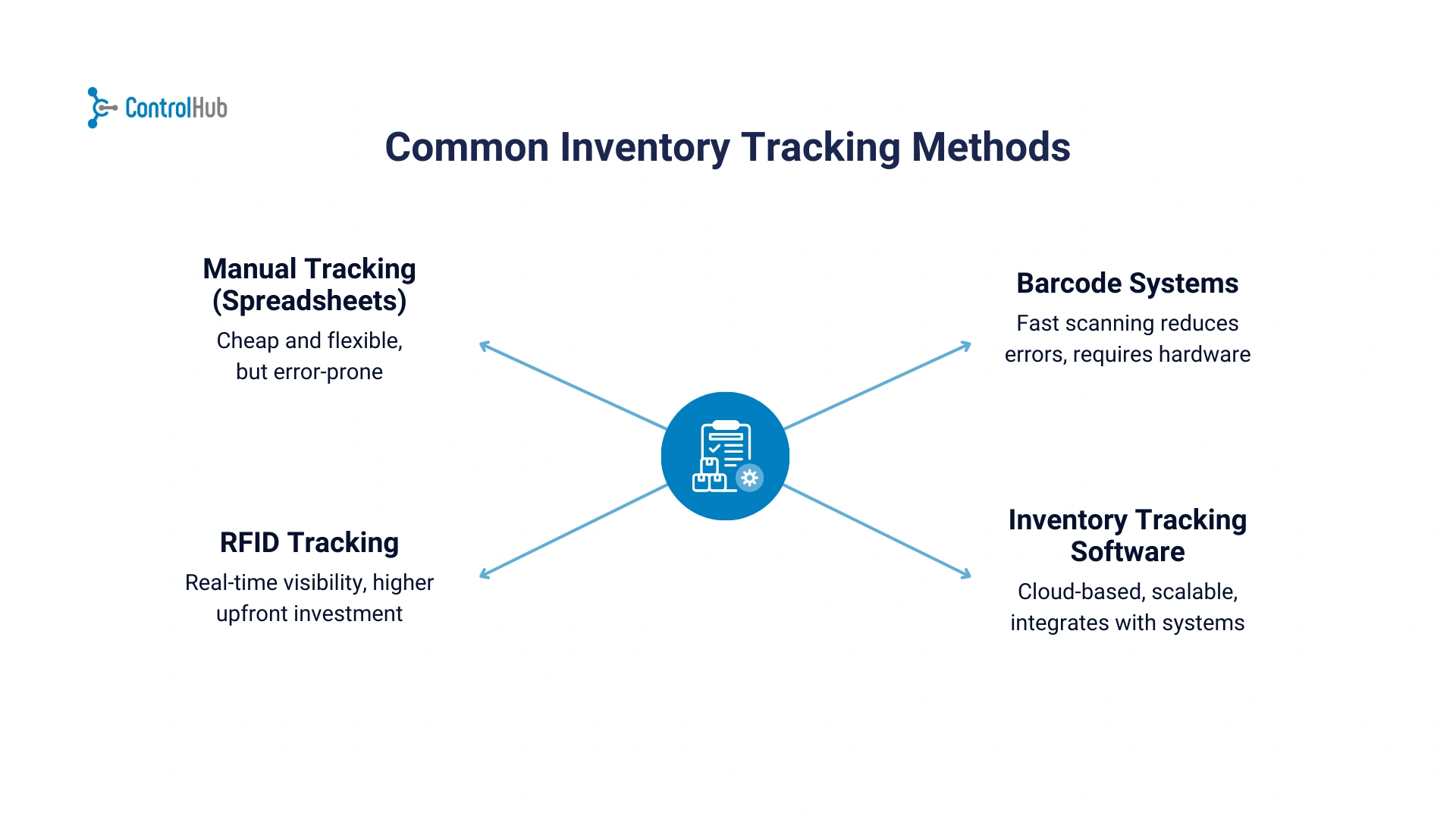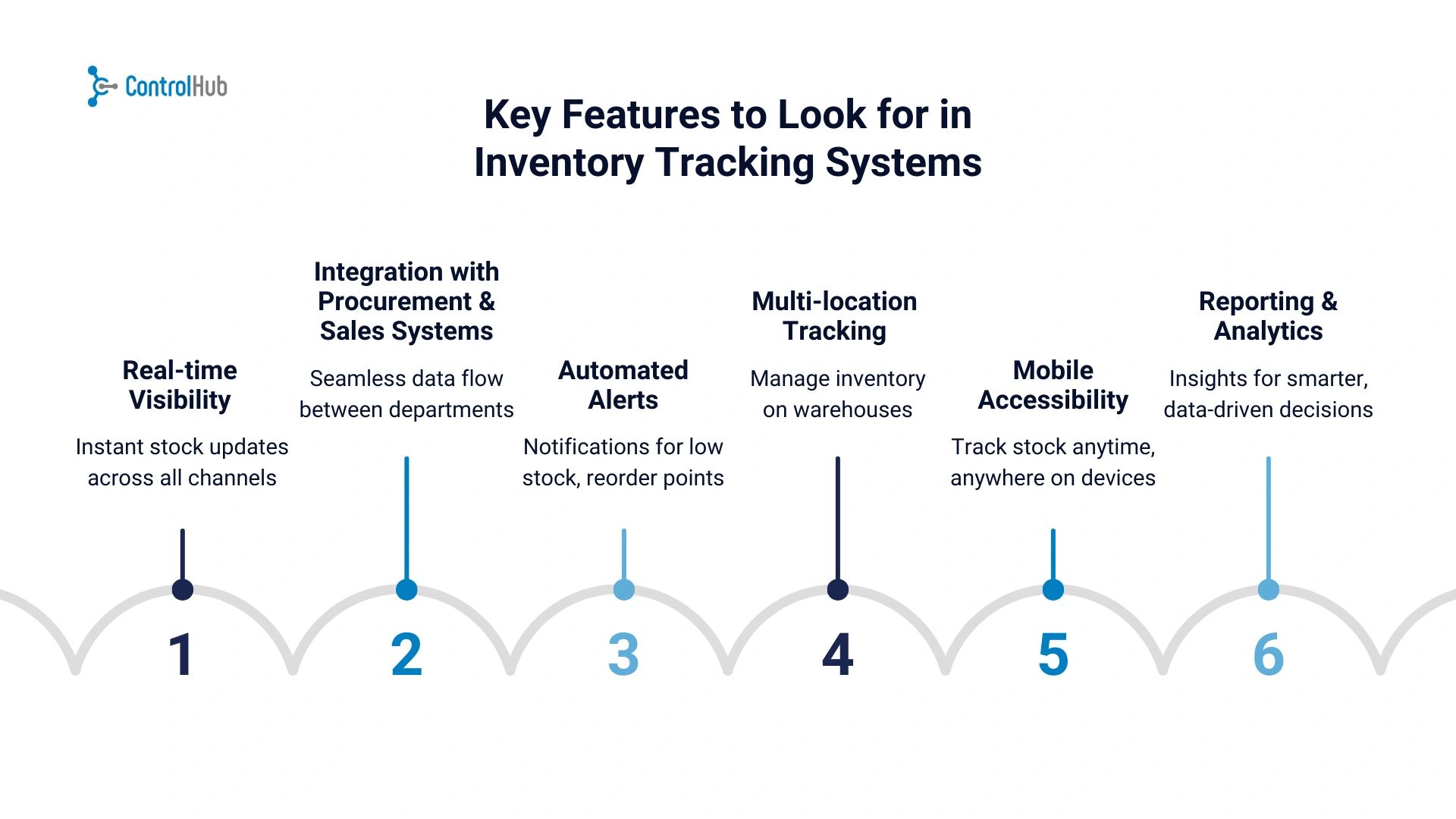Free Supplier Risk Scorecard Download
Download our free supplier risk scorecard here!
Download the free tool!AI Summarize:
It should be simple right?
Keeping an eye on your inventory.
You should be able to know what you own in stock based on your purchases and level of orders.
That's the theory
The reality is definitely not that straightforward.
Tracking your inventory stops to be something to look forward to and becomes a nightmare the moment your business grows.
Maybe even before
Because visibility?
It's non-negotiable these days.
The good news is, you don’t need to run a massive warehouse to benefit from better tracking. Whether you’re managing a small storeroom, an e-commerce shop, or multiple facilities, the right approach can cut waste, improve forecasting, and keep your procurement process moving forward.
Common Inventory Tracking Methods
When it comes to keeping tabs on stock, there’s no one-size-fits-all.
The method you pick usually depends on the size of your operation, budget, and how much complexity you can actually handle.
However, if you want some basic guidance, here are the main approaches:
Manual Tracking (Spreadsheets)
Probably the most common starting point.
It’s cheap, flexible, and doesn’t require much setup. But let’s be honest, manual entry gets messy fast.
Typos, missed updates, and version control issues can throw off your numbers and lead to problematic mistakes.
If you are only starting, there’s nothing wrong with Excel…
If you are ready to grow, it might not be the best choice.
Barcode Systems
A reliable upgrade from spreadsheets.
Every product gets a scannable code, making check-ins and check-outs quick and accurate. Barcodes are relatively affordable and reduce human error, but you’ll need scanners or mobile apps to make it work, so bear that additional cost in mind.
RFID Tracking
This takes automation further…and it's kind of cool.
RFID tags transmit data wirelessly, letting you track items in real time without manually scanning each one.
It’s more expensive up front, but if you’re handling high volumes or fast-moving inventory, RFID can save hours of labor and give you instant visibility.
Inventory Tracking Software
Cloud-based tools bring everything together: stock levels, purchase orders, supplier data, and even integrations with accounting or e-commerce platforms.
They’re scalable and user-friendly, with dashboards and alerts that keep your team aligned.
Yes, you’ll definitely need to invest some money annually, but isn’t peace of mind and efficiency worth it?
Key Features to Look for in Inventory Tracking Systems
Not all inventory tools are built the same.
Some are perfect for small teams just trying to stay organized, while others are designed to handle complex supply chains across multiple locations.
So how can you make sure you are choosing the right one?
Here are the features that really make a difference:
Real-Time Visibility
Visibility is a non-negotiable requirement for any business.
You don’t want to wait until the end of the day to know what’s in stock.
Real-time updates let you spot shortages or surpluses as they happen, so you can make quick decisions and avoid surprises.
Integrations That Actually Work
The best systems connect perfectly with procurement, accounting, and even your sales platform.
That way, purchase orders, invoices, and inventory data all talk to each other without you having to do double entry.
And it's not like we want to make some propaganda, but ControlHub leans into this by making the purchasing side easy, so inventory never feels disconnected from your spending habits.
Okay, maybe that sounds a bit too much like an ad, but in all honesty…this is how you make your company grow.
Automated Alerts and Reorder Points
Who wants to spend hours manually checking every SKU?
With the right system, you can set thresholds that trigger notifications.
When stock dips below a set level, the system prompts you to reorder, helping prevent stockouts without tying up capital in excess inventory.
Multi-Location Tracking
If you manage more than one warehouse, retail space, or office storeroom, you need visibility across all of them. Multi-location features show you not just what you have, but where it’s sitting.
Mobile Accessibility
Remote work is the new normal.
Your team isn’t always going to be tied to a desk.
Mobile apps let employees scan barcodes, check stock, or approve purchase requests from anywhere.
Reporting and Analytics
Beyond just knowing what’s on hand, analytics highlight trends, fast movers, slow movers, seasonal patterns that feed into smarter forecasting and procurement.
Free Supplier Risk Scorecard Download
Download our free supplier risk scorecard here!
Download the free tool!Best Practices for Effective Inventory Tracking
Set Reorder Points and Safety Stock
Don’t wait until you’re out of an item to reorder it. Define reorder points based on lead times and demand, and keep a safety buffer for unexpected spikes.
Run Regular Audits and Cycle Counts
Even the best systems need a reality check.
Instead of stressing over doing one massive annual count, run smaller cycle counts throughout the year. It’s less disruptive and keeps your strategies aligned with reality.
Standardize SKUs and Naming Conventions
There's a reason why standardized processes are the king of procurement
If one person enters “Widget A” and another logs it as “WGT-A,” you’ll end up with duplicate records.
A standardized naming system keeps things consistent and easier to search.
Automate Wherever Possible
Manual data entry is slow and error-prone. Use barcode scanners, RFID, or software integrations to update stock automatically. Less typing, fewer mistakes.
Train Your Team
Even the smartest software falls flat if people don’t use it correctly.
You hear it everywhere.
So, unless you want to pay for literally nothing, keep onboarding simple, offer refreshers, and make sure everyone understands why accurate tracking matters.
Use Data to Refine Procurement
Ever wondered why procurement sometimes fails?
Put the blame on the quality of your data
Tracking isn’t just about knowing what’s in the warehouse.
Look at patterns, seasonal demand, supplier delays, product turnover,
and adjust your procurement strategy accordingly.
Free Supplier Risk Scorecard Download
Download our free supplier risk scorecard here!
Download the free tool!Free Supplier Risk Scorecard Download
Download our free supplier risk scorecard here!
Download the free tool!Free Supplier Risk Scorecard Download
Download our free supplier risk scorecard here!
Download the free tool!Key Takeaways
Inventory tracking is about visibility—knowing what you have, where it is, and how fast it’s moving.
Choosing the right method (manual, barcode, RFID, or software) depends on your size, budget, and growth plans.
The most useful systems offer real-time updates, integrations, alerts, mobile access, and solid reporting.
Best practices like setting reorder points, cycle counts, and standardizing SKUs keep your data accurate.
Common challenges—like errors, poor adoption, or lack of integration—can be solved with automation, training, and scalable software.
Future trends like AI, IoT, and predictive analytics will make tracking more proactive and less reactive.
Investing in better inventory tracking isn’t just about stock—it strengthens procurement, improves forecasting, and keeps customers happy.
%20(1).avif)





.webp)











.png)


